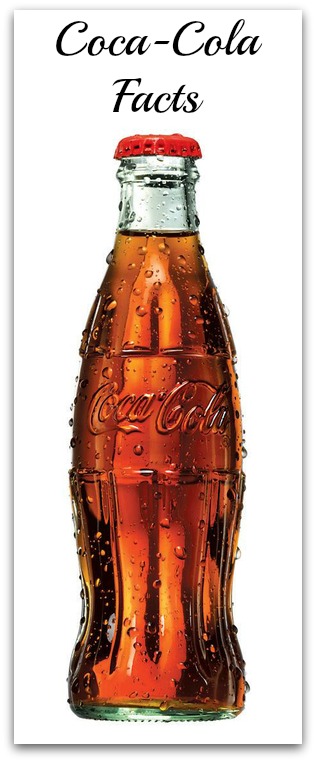It’s one of the oldest and most distinctively American products…but how much do you really know about Coke?
Coca-Cola inventor John Pemberton, a trained doctor, served in the Civil War…for the Confederate Army. He made it to the rank of colonel, and in combat he suffered a wound that left him addicted to morphine. He created Coca-Cola as a way to break himself (and he presumed, many others) of that addiction. It worked, although in the 19th century, Coca-Cola contained both alcohol and cocaine, with the former phased out the latter ultimately replaced with caffeine.
- Cost of a serving of Coca-Cola at a soda fountain in 1886: 5 cents. Cost of a serving of Coca-Cola until 1959: 5 cents. Coke kept the price at a nickel for more than seven decades, surviving progressive inflation and even World War II-era rationing that made sugar triple in cost to keep prices down. Reason: It was a form of marketing, a way to build consumer trust. (Economists have a name for this: “nominal pride rigidity.”
- In 1932, Coca-Cola introduced the concept of selling beverages in a six-pack. A plastic six-pack ring wasn’t used—it was a printed cardboard carton, similar to the 12-pack cardboard tubes used to sell soda in supermarkets today.
- The reformulation of Coca-Cola and introduction of “New Coke” was a famous debacle for the company in 1985-86, so much so that the original formula was quickly returned to stores under the name “Coca-Cola Classic.” New Coke, however, was not an immediate failure. It maintained a 3 percent market share for years, until it was renamed “Coke II” in 1990. It was hard to find, but Coke II/New Coke was available all the way up until 2002.
- The New Coke incident seemed like such a dumb business move that it spawned many urban legends and conspiracy theories. One was that the restored old-Coke formula somehow tasted “different”—because it was different. Some believed that Coke had used the New Coke switchover as a ruse to replace the sugar in original with cheaper high-fructose corn syrup. The truth? Somewhere in the middle. In 1980, Coca-Cola had begun replacing a little bit of the sugar with HFCS, gradually increasing the ratio in favor of the new sweetener. By 1985, and with the restoration of Coca-Cola, the transition was complete.
- The formula for Coca-Cola is known by only two executives and is held in a vault in a branch of SunTrust Bank in Atlanta, not far from Coca-Cola headquarters.
- The beverage reportedly lacks the ability to impart “taste memory.” That means that you can remember, at least vaguely, what Coca-Cola tastes like, enough to crave one and drink one every day…but not enough so that you ever get tired of the taste.








